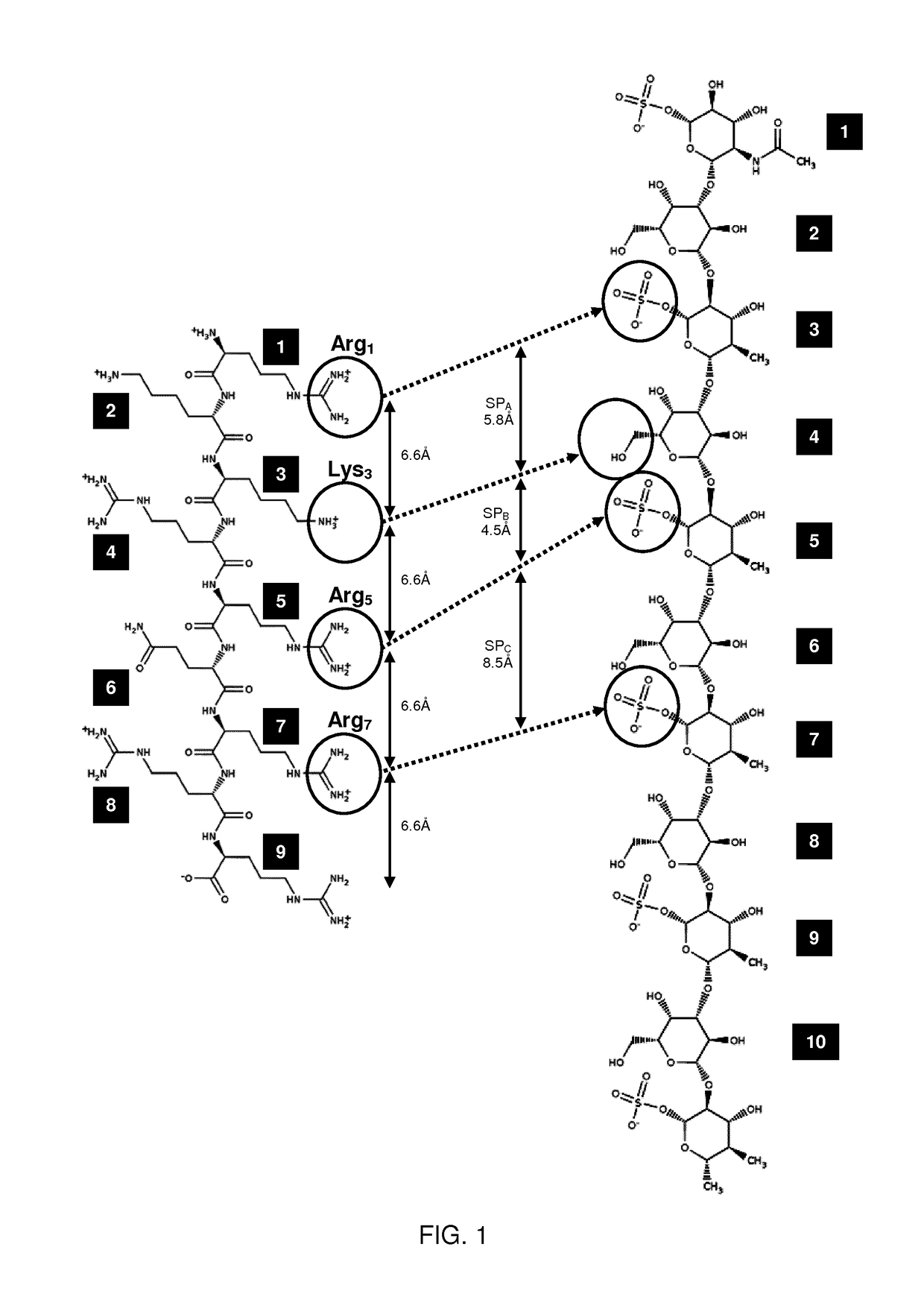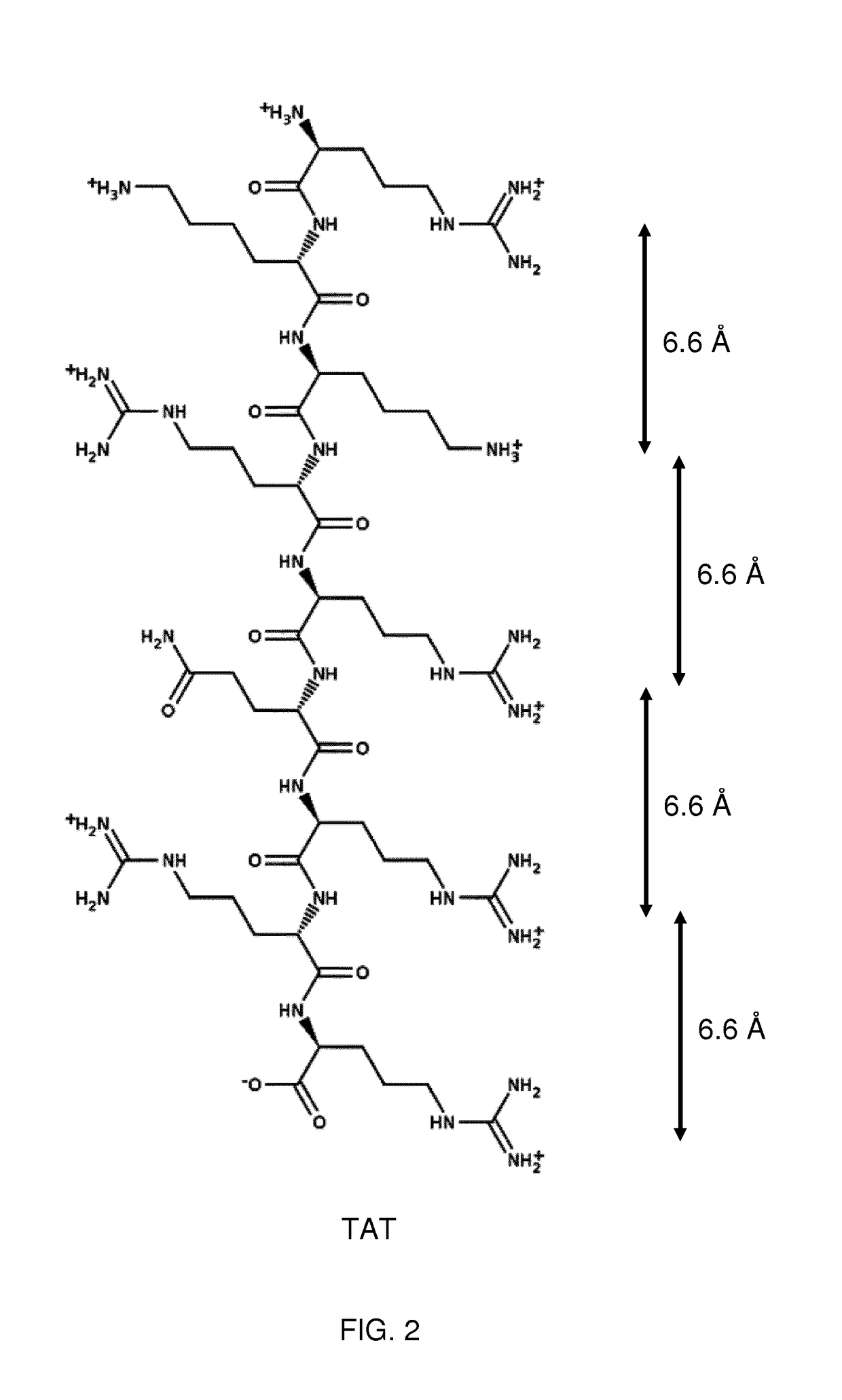Keratan sulfate specific transporter molecules
a technology of keratan sulfate and specific transporter molecules, which is applied in the direction of specific cell targeting, peptide/protein ingredients, nervous disorders, etc., can solve the problems of inability to specifically target and deliver a compound of interest into specific cells or tissues, inability to effectively target small molecules at very low rates, and inability to achieve specific targeting and delivery of compounds of interest. , to achieve the effect of improving in vivo stability
- Summary
- Abstract
- Description
- Claims
- Application Information
AI Technical Summary
Benefits of technology
Problems solved by technology
Method used
Image
Examples
Embodiment Construction
[0100]The present invention relates to molecules, peptides, polypeptides and compounds comprising or consisting of such molecules, peptides or polypeptides having specific consensus sequences or structures and their use for specific transport of biologically active moieties (BAMs) to the intercellular environment, i.e., the cytoplasm and / or the nucleus. The inventors have surprisingly discovered that certain consensus structures or sequences of molecules and peptides are able to selectively target specific proteoglycans, in particular keratan-sulfate (KS). Accordingly, the molecules, proteins, polypeptides and compounds comprising or consisting of such molecules, peptide or polypeptide comprising or consisting of one or more of the consensus sequences disclosed herein may find particular use as transport moieties for the targeted delivery of BAMs to cells expressing KS.
[0101]Although the binding of certain peptides to proteoglycans and phospholipids is known, it has previously been ...
PUM
| Property | Measurement | Unit |
|---|---|---|
| Fraction | aaaaa | aaaaa |
| Composition | aaaaa | aaaaa |
| Covalent bond | aaaaa | aaaaa |
Abstract
Description
Claims
Application Information
 Login to View More
Login to View More - Generate Ideas
- Intellectual Property
- Life Sciences
- Materials
- Tech Scout
- Unparalleled Data Quality
- Higher Quality Content
- 60% Fewer Hallucinations
Browse by: Latest US Patents, China's latest patents, Technical Efficacy Thesaurus, Application Domain, Technology Topic, Popular Technical Reports.
© 2025 PatSnap. All rights reserved.Legal|Privacy policy|Modern Slavery Act Transparency Statement|Sitemap|About US| Contact US: help@patsnap.com



